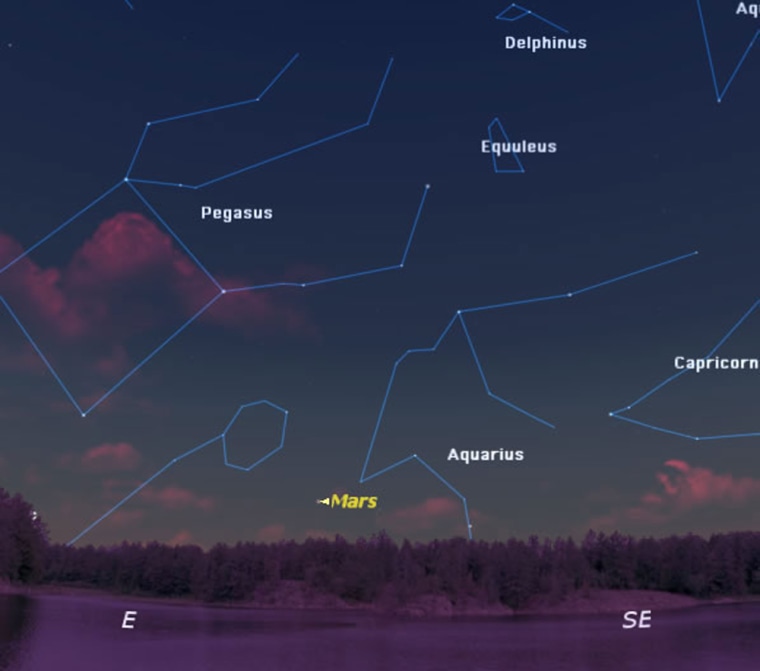For the past several months, Mars has been dawdling very low in the east-southeast sky and mired deep in the dawn twilight, making it difficult to see.
Finally, the Red Planet is beginning to brighten up.
In the coming weeks Mars will be gaining altitude while progressing into a darker part of the sky. Currently, it's rising south of east about two hours before sunup. It hangs nearly motionless above the east-southeastern horizon as seen at dawn all month, while the faint stars of Aquarius slide behind Mars and toward its upper right. Through a telescope, first magnitude Mars is disappointingly tiny.
Getting better
The best views we can get of Mars come when the Earth overtakes the slower-moving Mars in their respective orbits. That also usually occurs within a few days of the two planets making their closest approach to each other and in our sky Mars appears directly opposite to the Sun in the sky — rising at sunset, appearing highest in the sky around midnight, and setting at sunrise.
Astronomers refer to this as "opposition," but the next opposition for Mars is still a very long way off (Christmas Eve to be exact) so it's going a while before it will appear large enough for a telescopic view to be worthwhile. Mars will actually reach its closest point to the Earth —54,783,381 miles (88,146,460 kilometers) — about a week earlier, on Dec. 18.
Right now, Mars is still rather far: about 163 million miles (262 million kilometers) away. But by late December, it will be glowing more than four times brighter, at magnitude -1.6. That's a bit brighter than Sirius, the brightest star in the sky.
Don't be fooled
Now for something a bit different: just about this time of year over the past three years, people start receiving an e-mail titled "Mars Spectacular," which has circulated widely on the Internet from an anonymous source. In turn, this message has ended up being passed along to others who simply couldn't resist forwarding it to their entire address book; a snowball rolling down a hill is a good analogy.
This e-mail declares that on Aug. 27, Mars will be closer to Earth than it has in the past 60,000 years, thereby offering spectacular views of the Red Planet. The commentary even proclaims, with liberal use of exclamation marks, that Mars will appear as bright as (or as large as) the full Moon.
The problem is that "Aug. 27" actually refers to Aug. 27, 2003. Mars did indeed make a historically close pass by Earth that night. But, to the naked eye Mars merely appeared like a brilliant yellowish-orange star, certainly not anything like the full Moon.
So this Mars e-mail is completely bogus. Yet it now seems that every year in the late spring or summer, it gets revived.
Now I would like to make a request: If in the coming days and weeks you find yourself a recipient of this Mars e-mail message, I would suggest that rather than forward it on to others, you simply hit the "Delete" button on your computer keyboard; better yet, why not forward the article you're reading now to the person who may have passed the e-mail on to you. In this way, you'll be providing an antidote to this Mars computer virus.
